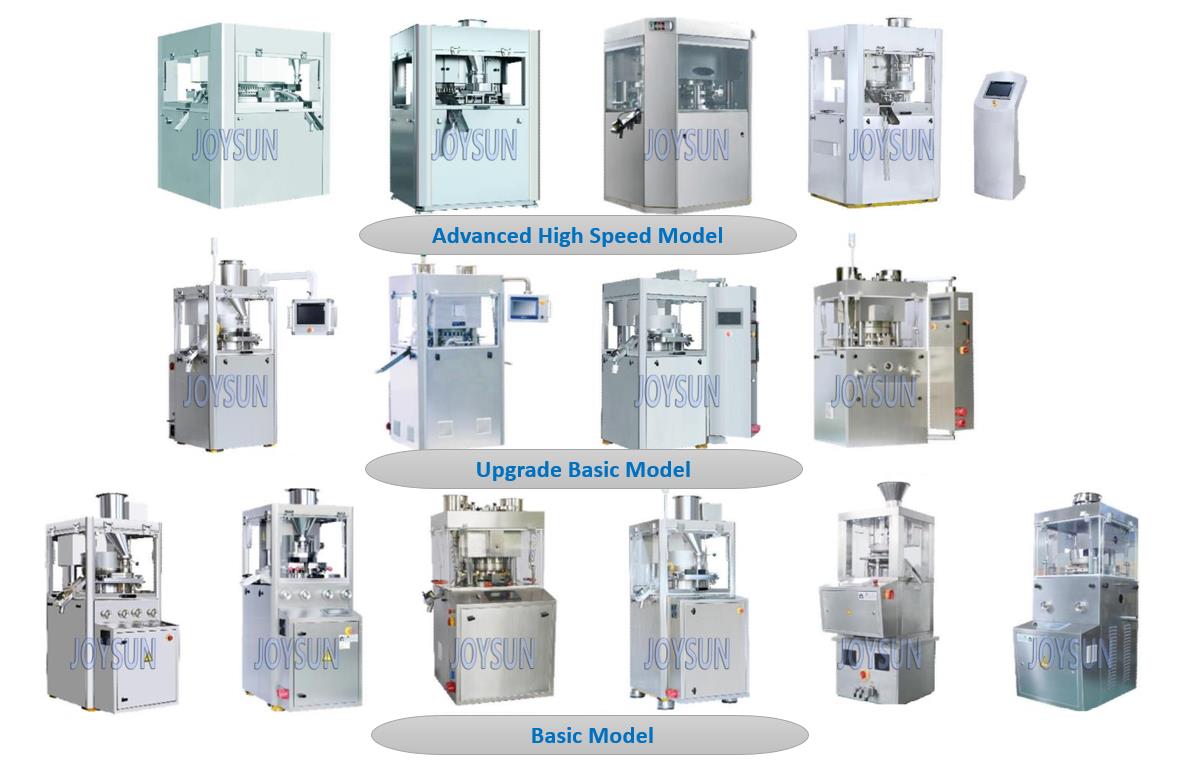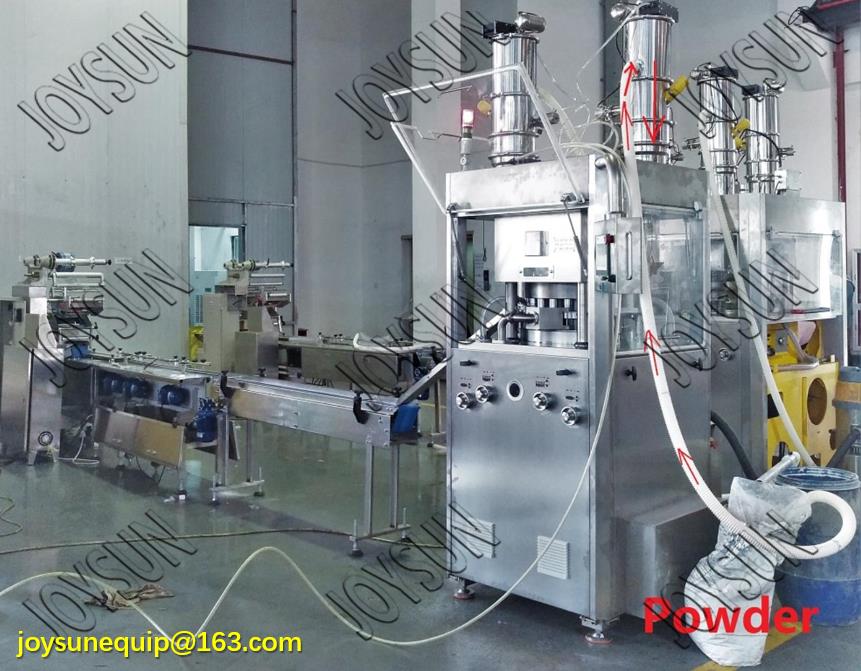How to Buy the Right Tablet Press and What to Consider
- by JSPHARMA
- August 10, 2023
How to Buy the Right Tablet Press and What to Consider
The tablet press is a very commonly seen machine in solid dosage formulation. Full comprehension of the tablet pressing and full consideration is a must before purchasing. The following article introduces the main features of the tablet press, punch and die (tablet pressing tools), raw material/grain/powder, as well as the relationship among them. This will helpfully eliminate some of the buying concerns.
Deciding which type of tablet press to buy might be a headache for the buyers, especially those who just get into this business. In facing different brands, different models, and specifications of tablet compressing machines, buyers might probably be at a loss. Instead of buying a tablet press right away, you can consider the following factors before a decision.
First of all, you should carefully plan out your production schedule. The tablet press to buy should not only meet the production output but also be suitable for the tablets in manufacturing. These factors play an important role in the selection of the most suitable tablet press to buy. It is also very important for buyers to fully understand the various parts of the entire tablet production process and the relationship among them. In addition, the buyer can also get to know some of the misunderstandings about tablet presses, so as to avoid those minefields.
There are three crucial parts in the tablet production process: tablet press (the manufacturing machine), ingredients (powder, grain, and pellet), and punches and dies (tablet press tooling). The tablet press is the core part of tablet production. It does not work independently. The buyer should consider it with ingredients and tooling in order to have a complete understanding.
Tablet Machine
Buyers often consider the tablet press as the most important part of the purchasing process due to the high cost. The tablet press punch and die determine the tablet size, output, and compressing pressure. The fluidity of the particles, the tableting speed, compressibility will also affect how you use the tablet press.
Particle
Particles have unique sizes and distribution, fluidity, and compression properties to meet the tableting requirements. These properties also decide what kind of tablet press to use.
Punch and Die
The design of punches and dies determines the size and shape of the tablets. Different materials, coatings, and heat treatment used in the press tooling affect the tableting operation. So the 3 factors are inter-influence each other.
Common Misunderstandings
Buyers usually have some common misunderstandings for the tablet press. By the misunderstandings listed below, hope to help you to make the best choice.
1# Misunderstanding
When using the same material, the running performance of the laboratory single punch tablet press is the same as that of the high-speed rotary tablet press. This is not right. Users should realize that there is a big difference between the R&D process and the actual mass production process. The biggest difference is that the tableting speed of the R&D tablet machine is much lower than that of the rotary tablet press. Different tablet compression speed not only affects the hardness of the tablet but also cause changes in the compression process. Users will usually increase the pressure when it is higher speed, but such change might do damage to the punch and die, or sometimes change the disintegration property of the tablets.
The size of punches and dies and the shape of the tablets change the compression situation.
Let’s say there are two similar tablet presses, with the same circumstance, one uses a B-type punch in the laboratory, and the other uses a D-type punch in a rotary tablet press. Will be result be the same? of course not. This is because the laboratory tablet press and mass production rotary press machine have differences in machine mechanical structure, compressing speed, compression ratio, tablet shape, and compression time. Awareness of these differences will help you know and compare better.
2# Misunderstanding
Buying a high-speed rotary tablet press, then the user can produce at the highest speed. The practice has proved that this is wrong. The pellets are unique, and each batch of pellets has a required compression ratio. This compression ratio will determine the speed of the rotary tablet press in use. If need higher pressure during production, the user can reduce the compression speed, or adjust the compression ratio of the pellets. At the same time, don’t neglect the punch and die size. I.E. the compressing area of the D-type is larger than that of the B-type. Run two tablet presses at the same speed, the hardness of the tablets produced by the D-die will be higher.
Use the theory and experience from the R&D stage to guide and predict the working status of mass production. This is the reason why you should start with a small lab size.
3# Misunderstanding
The feeders of all tablet presses are the same. This is obviously wrong. Because different tablet presses use different feeders to continuously feed the material into the die. If the material cannot flow continuously, it will greatly limit the speed of tablet pressing. Two different types of feeding systems are described below.
1. Open feeder: It is the most common feeder. The granules are gradually filled into the die holes through gravity force. The good granule fluidity ensures a minor difference in tablet weight.
2. Closed feeder: During operation, the material feeding process is separated into two steps, and is equipped with variable-speed inverters. In the first step, the particles go from the hopper to the storage bin of the feeder. In the second step, the particles in the storage bin go to the feeder. This is to ensure uninterrupted feeding, reducing the weight difference as much as possible.
To define whether a tablet is qualified or not, we should check the hardness of it via testing machines.
4# Misunderstanding
Buy a tablet press only considering from a technical point of view.
This is easy to understand. After buying and installing the tablet press, the buyer will also need technical support from the tablet press supplier. So a good relationship with machine suppliers is essential. Their expertise will be of great help to verify the tablet press and provide technical services. Establishing a strong and friendly relationship with suppliers is the key to success.
Generally, the user of a pharmaceutical company must verify the new machine, so the verification level provided by the supplier must be evaluated before purchasing the tablet press. With the help of the supplier, the verification time can be shortened. The quality of after-sales service and the supply of spare parts and backup accessories matter too. Hence, a reliable tablet press supplier is crucial.



